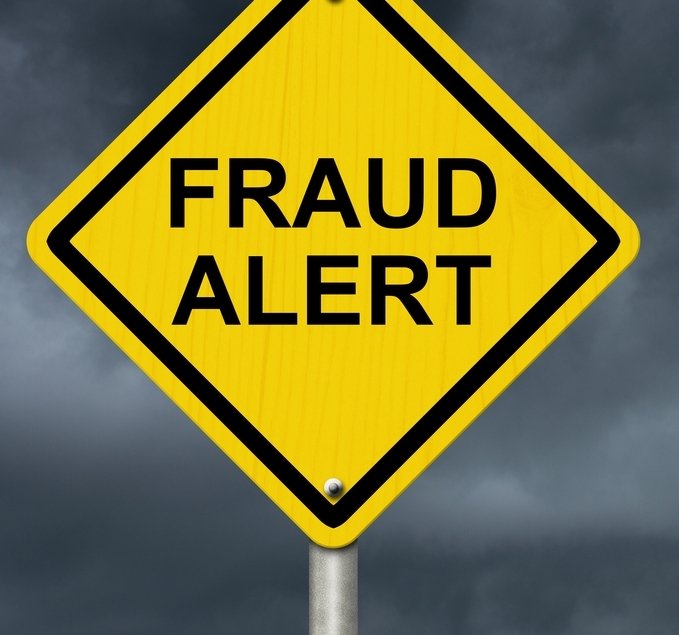All posts by NFI
The Many Faces of Food Fraud (Part IV)
Google Alert was busy this week with media pick up of Oceana’s awareness campaign on seafood fraud, including some good coverage of the Better Seafood Board.
But interspersed with these stories are some different takes on fraud in the seafood industry that hit the media waves this week. Lest we think that all fraud takes place in the United States, the first story is from down under in Australia.
Seafood Fraudster Pleads Guilty
A Gold Coast man pleaded guilty to 23 counts of fraud and obtaining money by false pretenses charges of defrauding five people of a total of about $6.5 million for investing in a non-existent seafood business.
Former bookkeeper sentenced to 28 months for embezzling $2.3M from Va. seafood company
A former bookkeeper for a local seafood company was sentenced Wednesday to 28 months in federal prison, plus 10 months of home confinement, after admitting she embezzled $2.3 million from the company to feed her gambling addiction.
Southern California Seafood Dealer Pleads Guilty to Selling Whale Meat
A Gardena seafood dealer who imported endangered whale meat from Tokyo and sold it to sushi restaurants pled guilty to a misdemeanor charge for selling a marine mammal product for an unauthorized purpose, in violation of the federal Marine Mammal Protection Act.
Trucker Disappears with $400,000 Worth of Crab
A truck load of 25,000 pounds of king crab disappears. The trucking company and truckers documents appear to have been bogus.
If It Looks Like a Duck …
You may have missed it, because this is not a seafood example, but once again FDA has issued a Warning Letter to a firm for alleged situations of species substitution. In this situation, FDA reports finding the following:
- Lamb and Rice Dog Food that did not contain lamb but rather contained bovine
- Grain-free Duck Pet Food that did not contain duck
Again, the take away from this Warning Letter is that species substitution may cause products to be adulterated and misbranded both violations of the Federal Food Drug and Cosmetic Act (the Act).
The products were considered adulterated in that a valuable constituent (lamb or duck depending on the example) had been omitted and, in the case of the lamb, another ingredient had been substituted. Also, the products were considered misbranded in that they were offered for sale under the name of another food or if the labeling is false or misleading.
Species substitution is against the law. These warning letters from FDA confirm what we all already know.
Species Substitution of a Different Elk
Kudos to FDA for issuing a Warning Letter for an alleged case of species substitution. It wasn’t seafood related, but it was a crack down on species substitution nonetheless. In this situation, FDA reports finding the following:
- Black Bear Burger product that actually contained elk/red deer meat
- Black Bear Steak product that actually contained Brown Bear
The take away from this Warning Letter is that species substitution may cause products to be adulterated and misbranded both violations of the Federal Food Drug and Cosmetic Act (the Act).
The products were considered adulterated in that a valuable constituent (Black Bear) had been omitted and another ingredient had been substituted. Also the products were considered misbranded in that they were offered for sale under the name of another food.
When customers aren’t getting what they pay, for be it Black Bear Steak or a grouper sandwich, they are getting cheated. And that is against the law.
Tips to Prevent Fraud
I just read an interesting article that came to my attention through Google Alerts. This online article – Crisis Management in the Poultry Industry Preparing for the Unexpected – provides some good general quick tips for purchasers to prevent being the recipient of fraudulent products. Suggestions like applying a risk rating to the goods you purchase, especially goods purchased on spot markets, or having sufficiently detailed product specifications which are agreed upon by both parties, or monitoring suppliers performance are among the nine tips provided. Although the audience is for the poultry industry (the article also will appear in the March 2011 issue of Poultry International), the tips are universal and can be adapted by seafood buyers to minimize the risk of being a victim of species substitution, illegal transshipment or even short weights.
Science to Combat Fraud (Part III)
Some good reading on federal and state fish and wildlife officers activities to crack down on the illegal trade in endangered species with DNA testing. Yes this the same testing that is used by companies to verify the identity of species. Is that $5 grouper sandwich really grouper? Remove the identifying features (head, tail, fins and scales) and it is difficult for the non-fish-expert to know what fish is on the plate.
The Many Faces of Food Fraud (Part III)
Apparently fraud is a two-way street.
The Better Seafood Board focuses on eliminating fraud in the seafood industry actions that unscrupulous suppliers take to cheat the customer. Like identifying one type of fish for another, lesser value, fish. Or including the weight of the ice glaze as part of the net weight of the frozen seafood product. Or passing off imported product as product from the US.
But consumers commit fraud against food companies as well. Yesterday the Justice Department announced that Mary Evano of Massachusetts pled guilty to submitting false insurance claims for ingesting glass found in food. Ms. Evano faces up to 143 years in prison for these crimes which took place over an eight year period. Her husband, Ronald Evano, has already been sentenced for the same crimes.
The Many Faces of Food Fraud (Part II)
As mentioned before, fraud in the seafood and food industry can happen in many ways and in any country.
Former Ocean Fresh owner pleads guilty in fraud case
Food wholesalers targeted by fishy fraud
Illegal vendor loses $35k in fishing gear
Food Matters: Food fraud unacceptable
Its been a busy week onfraud patrol.
Food and Fraud
Consumer groups often lobby for the posting of restaurant inspection reports so the consuming public can use this information when deciding whether or not to patronize an eating establishment. New York City Health Department jumped on the information band wagon this summer and has starting requiring restaurants to display inspections grades in the front window. Well it didnt take long for the cheating to occur. Whether or not you believe that posting inspection grades will be helpful to both consumers and businesses, cheating on the requirement with fake certificates puts companies that follow the rules at a competitive disadvantage. Why is it that food and fraud always go together as suggested by this blogger?
Science to Combat Fraud (Part II)
For any company sourcing ingredients based on protein content, the melamine contamination of pet food in 2007 certainly raised concerns with the test methodologies for total protein which are based on determining nitrogen content. As you will recall, melamine will increase the nitrogen level in a food fraudulently raising the protein content. This scheme may never have been detected if it werent for the deaths of pets in the United States. And it provided the impetus for FDA to give a serious look at stopping economically motivated adulteration.
Publishing in the July issue of Comprehensive Review in Food Science and Food Safety is a scientific review of Total Protein Methods and Their Potential Utility to Reduce the Risk of Food Protein Adulteration. Its good to see the science community looking into ways to detect fraud in foods.
Bending the Truth
Taking liberties with menu descriptions is not just a U.S. phenomenon. A recent story from the UK reveled that restaurants on the other side of the Atlantic have been misleading diners with less-than-truthful descriptions of menu items. Here aresome examples:
- home-made tart actually from a national wholesaler
- home-made soup from a dry soup mix
- fire-roasted vegetables baked in an oven
- free-range eggs were not
And not to be left out, seafood was misrepresented as well:
- fresh mussels and fresh tuna steak were actually frozen
- battered cod or haddock was Pollack, whiting, pangasius
This quote from Jim Potts, Lancashire’s chief trading standards officer, says it all: people had the right to expect that the meals they buy are genuinely described on the menus and price lists. And the investigation didnt require any type of high-tech DNA testing to unearth the fraud. A simple matching up of invoices and ingredients in the store room/cooler/freezer to the menu description was all it took.






